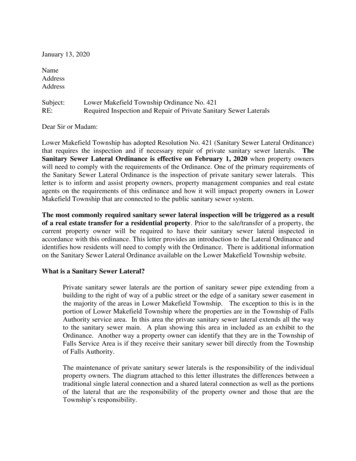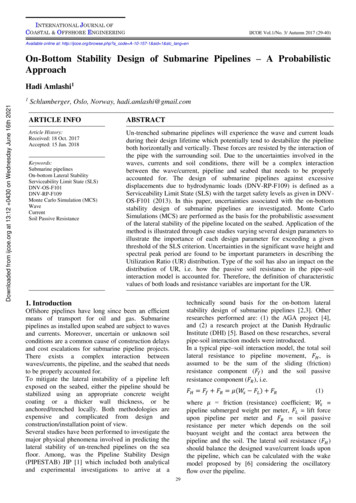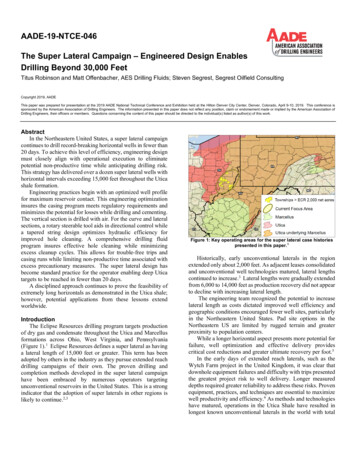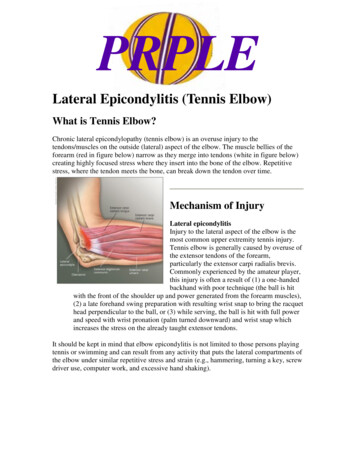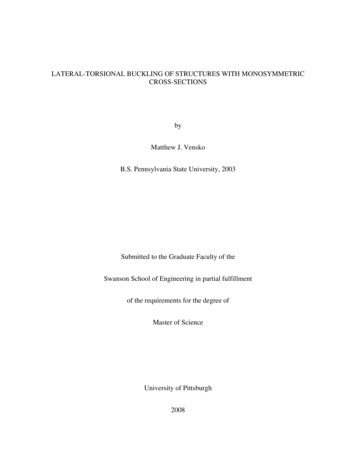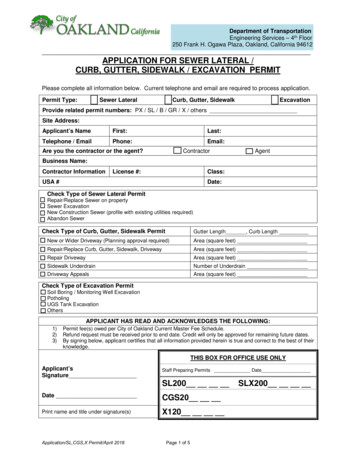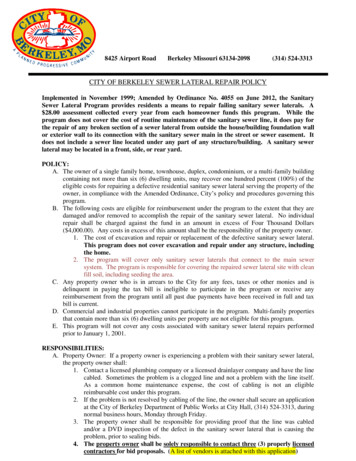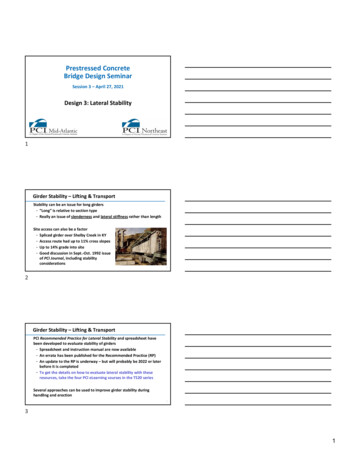
Transcription
Prestressed ConcreteBridge Design SeminarSession 3 – April 27, 2021Design 3: Lateral Stability1Girder Stability – Lifting & TransportStability can be an issue for long girders‐ “Long” is relative to section type‐ Really an issue of slenderness and lateral stiffness rather than lengthSite access can also be a factor‐ Spliced girder over Shelby Creek in KY‐ Access route had up to 11% cross slopes‐ Up to 14% grade into site‐ Good discussion in Sept.‐Oct. 1992 issueof PCI Journal, including stabilityconsiderations22Girder Stability – Lifting & TransportPCI Recommended Practice for Lateral Stability and spreadsheet havebeen developed to evaluate stability of girders‐ Spreadsheet and instruction manual are now available‐ An errata has been published for the Recommended Practice (RP)‐ An update to the RP is underway – but will probably be 2022 or laterbefore it is completed‐ To get the details on how to evaluate lateral stability with theseresources, take the four PCI eLearning courses in the T520 seriesSeveral approaches can be used to improve girder stability duringhandling and erection331
Girder Stability – Lifting & TransportMoving lifting loops & temporary supports in from ends helps improvestability‐ But stresses should be checked with altered support locationsSome DOTs specify a maximum distance from end of girder to liftingloops or devices on standard beam sheets or in specifications‐ Lifting at about 1.5 x depth of girder is generally good‐ Specifying use of a fixed distance from the end, such as 3 ft, can leadto problems44Girder Stability – Lifting & TransportIncrease overhang over supports to improve stability during hauling‐ Need to consider stresses, but will have full f’c by time of shippingGirders must be securely attached to truck‐ Several types of details are used‐ Rigid connections between the girder and truck are assumed55Girder Stability – Lifting & TransportRigid lifting devices raise the point of rotation to improve stability662
Girder Stability – Lifting & TransportExternal stiffening frames have been used to improve stability77Girder Stability – Lifting & TransportAdding strands in the top flange have been used to improve stability‐ Top flange is less likely to crack, losing stiffness‐ Improves stresses if lifting and support locations are moved fromends of girders‐ Design using top strands and temporary top strands (debonded anddetensioned) were discussed in an earlier presentation88Girder Stability – Lifting & TransportIn most states, designers are not assigned responsibility for consideringlifting, handling, and transport‐ Girders are only designed to satisfy design requirements at transferof prestress and in final conditionsHowever, some girders, as designed and bid, cannot be safely handledand/or transported‐ Design must be modified to address high stresses or lateral stability‐ For longer members, lifting loops are typically moved in from ends toaddress stability‐ But then stress limits may be exceeded when lifting‐ Design modifications after bid cause delays and increase costs993
Girder Stability – Lifting & TransportRecent revision to AASHTO LRFD Specifications addresses this issue‐ Adds mention of stability to Art. 5.5.4.3 and commentary‐ Alerts designers to consider stability, but contractor still responsible‐ Provides references for lateral stability analysisAlertRefs1010Girder Stability – Lifting & TransportAASHTO LRFD Art. C5.12.3.2 was also revised to address stability‐ Contractors are responsible for shipping and erection‐ Text from Art. C5.5.4.3 is repeated stating that designers shouldconsider preservice conditions as they may govern designAddedtext1111Girder Stability – Lifting & TransportAASHTO LRFD Art. 5.5.1.1 has been present in the LRFD since 1994This article clearly indicates thatdesigners are required to consider:‐ “stresses and deformations” forcritical stages during “construction,stressing, handling, transportation,and erection”But how do designers know what toassume as they consider girder designat these stages, and lateral stability?12124
Girder Stability – Lifting & TransportWSDOT has developed an excellent approach – a great example‐ WSDOT doesn’t want fabricators to change a design to make it work‐ So designers are required to consider handling and transportation Designers check lifting and transportation using provided parameters Design approach has become more complicated with new transport equipment‐ References for WSDOT practice – HIGHLY RECOMMENDED Design example by Seguirant et al. in Fall 2009 issue of PCI Journal (39 pp) Owner’s perspective by Brice in Winter 2018 issue of ASPIRE Procedures, assumptions, and responsibilities are clearly stated in WSDOTBridge Design Manual Art. 5.6.3 & Standard Specifications Art. 6‐02.3(25)LMN Presentation by Brice for G/C PCI PCEF Meeting #25 on 8/13/20 – see PDF andsupporting info at r Stability – Lifting & TransportAnother example is from SCDOT‐ SCDOT BDM Art. 5.5.2 Responsibilities‐ As noted, contractor remains responsible for successful construction‐ Preliminary evaluation is like an erection plan – a concept that will work1414Girder Stability – Lifting & TransportA final example is from GDOT B&SDM Art. 3.4.2.8Maximum beam lengths are based on stability considerations‐ Longer spans can be used for alt. bidding with analysis by EOR15155
Girder Stability – SummaryDesigners are using longer spans where lateral stability can be an issueSome designs may satisfy design requirements, but cannot be safely liftedor transported‐ Both stability limits and stresses may be exceeded‐ Design modifications are requiredRecent revisions to LRFD Specifications have clarified and expandedresponsibilities of designers in these areasPCI and others have developed resources for performing analysisOwners should consider implementation of new requirements‐ Several examples were provided1616Prestressed ConcreteBridge Design SeminarSession 3 – April 27, 2021Design 3: Lateral Stability176
4 10 Recent revision to AASHTO LRFD Specifications addresses this issue ‐Adds mention of stability to Art. 5.5.4.3 and commentary ‐Alerts designers to consider stability, but contractor still responsible ‐Provides references for lateral stability analysis Girder Stability -Lifting & Transport Alert Refs 11 AASHTO LRFD Art.
